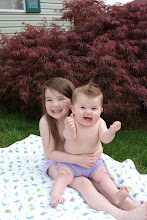Below is a list, in no particular order, of cloth diapering accessories and terms related to them. These items can make your experience with cloth diapering easier and/or more convenient.
Pins: Special safety pins used to fasten flat or prefold diapers. These have a special locking mechanism to make them hard for little hands to unfasten. Come in both metal or plastic head varieties.
Snappi: An alternative to pins. It is a T-shaped stretchy plastic device which grips the "wings" of the diaper and pulls down to form a Y. This will hold a prefold, flat, or contour diaper together without the use of pins. Snappis work best on fabrics like twill, terrycloth, sherpa, birdseye, cotton or hemp fleece. They don’t work on tightly woven fabric like flannel, or soft fabric like velour.
Aplix: Aplix® is a name brand of 2-part hook and look fasteners commonly used on cloth diapers. Other brands of hook and loop fasteners used on cloth diapers include Velcro® and Touch Tape®
Liners: Fleece liners are a thin layer of fleece material used between the baby's bottom and the cloth diaper itself. Fleece liners both keep poop off the surface of the diaper for easier clean up and also provide a "stay-dray" layer against the baby's skin. Single use liners are made of biodegradable fibers and are flushable after use. Liners can also be used to protect the cloth diaper when rash creams are needed (commercial rash creams can often stain cloth diapers). Using a silk or cotton velour liner can also provide a "stay-dry" effect, while using natural fibers against baby's skin.
Inserts: Separate multi-layered absorbent pads for use inside pocket diapers. These can be made from a variety of absorbent materials such as microfiber, hemp, cotton or bamboo and can be rectangular in shape or contoured.
Doublers: Multi-layered pads that are inserted between baby and the diaper to provide additional absorbency in the wet zone, without the additional bulk that comes this double diapering. These are recommended for heavy wetters or for night-time use.
Cloth Wipe: A fabric square or rectangle, often of cotton flannel or terry cloth, to be used in place of commercially available disposable wipes.
Diaper sprayer: A wonderful device that is similar to a kitchen sink sprayer or a hand held bidet. It attaches to the water source at your toilet and consists of a long hose with a sprayer attachment on the end. This is used to spray of soiled diapers. Waste is flushed down the toilet and the diaper is placed in the pail ready to wash.
Diaper pail: Diaper pails are still commercially available, but many moms use either a lidded bucket or a tall kitchen garbage pail.
Diaper pail liner: This is a large waterproof bag made usually made from PUL material. This is used to line the diaper pail. Diapers are placed in the liner and when ready to wash the liner is removed from the pail, transported to the washer, diapers are emptied into the washer and the liner is washed with the diapers.
Wet bag: This is a term used for a small waterproof bag, usually made from PUL or nylon, that is used to transport wet or soiled diapers. Essential for the diaper bag when using cloth diapers while away from home. Wet bags can also be made from wool.
Watch for more information on how to make your own cloth wipes in the future. Also look for more information on my personal diaper "stash", diaper reviews, washing instructions/recommendations, fabric choices, diaper rash issues, and info on using and caring for wool diaper covers. Those are my ideas for now. Please follow the blog and I would love to hear your comments and/or suggestions.
Saturday, October 24, 2009
Subscribe to:
Post Comments (Atom)





No comments:
Post a Comment